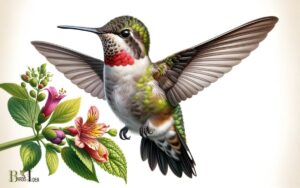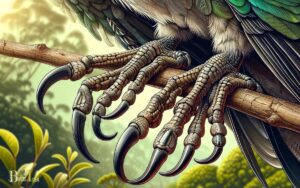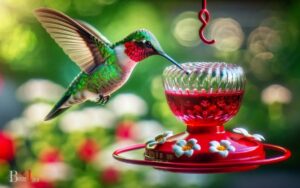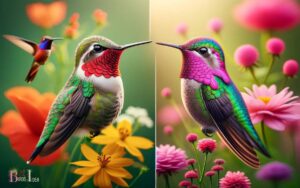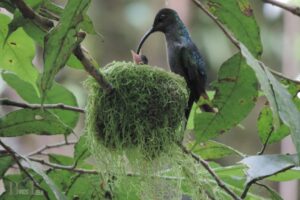Ruby Throated Hummingbird Food Recipe: Full Guide!
To prepare a simple and safe Ruby-throated Hummingbird food recipe, mix one part white granulated sugar with four parts water. Boil the mixture for 1-2 minutes to help prevent fermentation and eliminate any pathogens. Allow it to cool before filling the feeder.
Ruby-throated Hummingbirds, like other hummingbirds, primarily feed on nectar from flowers. The homemade sugar water solution mimics this natural diet. It’s crucial to avoid using honey or artificial sweeteners as they can harm hummingbirds.
Red dye is also unnecessary and potentially harmful; clear sugar water is perfectly suitable. This recipe is quick, cost-effective, and provides the birds with the essential energy they need.
Ensure a steady source of energy for Ruby-throated Hummingbirds with this homemade nectar, reflecting their natural dietary preferences and promoting their health.
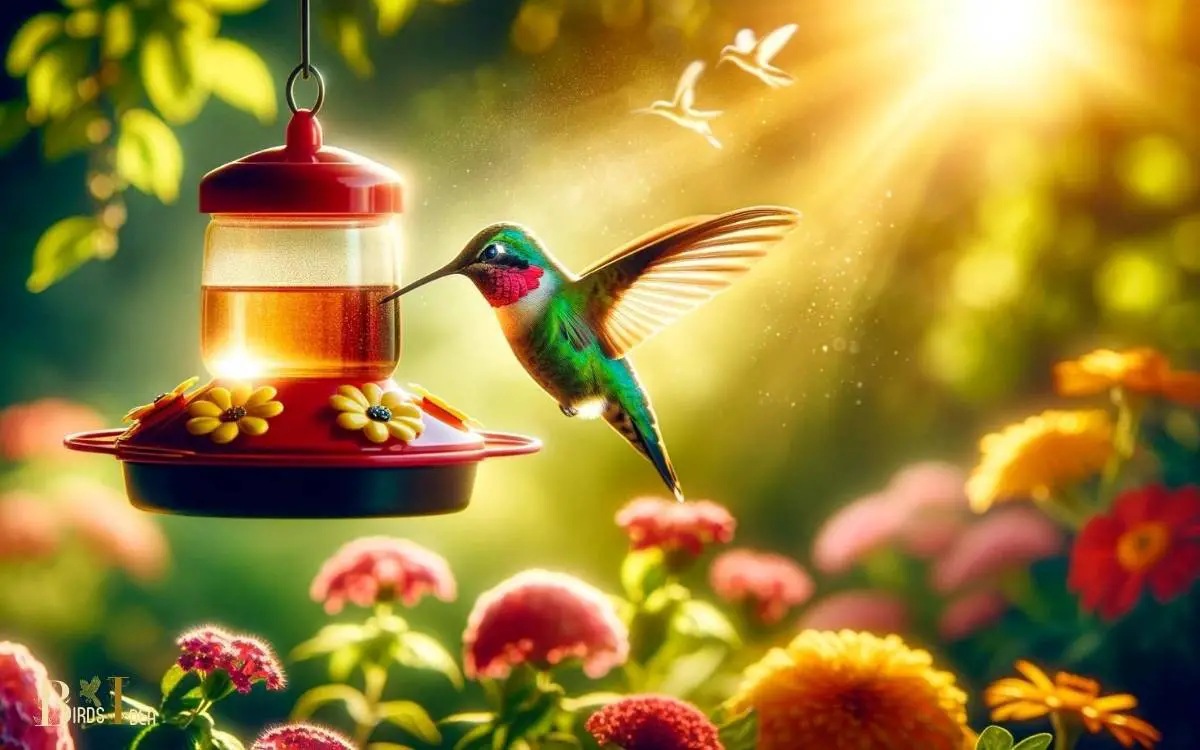
Key Takeaway
Ingredients for Homemade Hummingbird Food
Homemade hummingbird food requires only two simple ingredients: white granulated sugar and hot water. The sugar provides the necessary sucrose, which is the primary energy source for hummingbirds.
It is important to use white granulated sugar as other sweeteners, such as honey or artificial sweeteners, can be harmful to the birds. The hot water is used to dissolve the sugar and create the sugar solution.
The ratio of sugar to water is crucial, with the recommended ratio being 1 part sugar to 4 parts water. This closely mimics the sucrose concentration found in natural flower nectar, providing the hummingbirds with a familiar and nutritious food source.
It is essential to use hot water to aid in the dissolution of the sugar, ensuring a clear and easily digestible nectar for these remarkable birds.
Step-by-Step Instructions for Making Hummingbird Nectar
To prepare hummingbird nectar, begin by heating water in a pot until just before boiling.
- Once the water is hot, carefully stir in white granulated sugar, using a ratio of 1 part sugar to 4 parts water.
- For example, mix 1 cup of sugar with 4 cups of water for a larger batch.
- Stir the solution continuously until the sugar completely dissolves.
This sugar-to-water ratio closely mimics the natural sucrose content found in flower nectar, providing the essential energy hummingbirds need.
It’s crucial to ensure the sugar is fully dissolved, as undissolved sugar can lead to microbial growth that is harmful to hummingbirds.
Once the nectar has cooled, it can be poured into clean hummingbird feeders and placed outside for these delightful creatures to enjoy.
Tips for Attracting Ruby-Throated Hummingbirds
Attracting Ruby-throated hummingbirds to your garden can be achieved by creating a habitat that offers a variety of nectar-producing flowers and suitable perching spots.
Selecting native plants such as bee balm, cardinal flower, and trumpet vine will provide the nectar these birds rely on. Planting a diverse array of flowers ensures a continuous nectar supply throughout the blooming season.
Additionally, incorporating a water feature, such as a small fountain or birdbath, can attract hummingbirds for drinking and bathing. It’s crucial to avoid using pesticides in your garden, as these chemicals can be harmful to the hummingbirds and their food sources.
Providing perching spots near the nectar sources, such as small branches or garden stakes, allows the hummingbirds to rest and guard their feeding territories.
By creating a welcoming environment with abundant nectar sources and perching options, you can successfully attract Ruby-throated hummingbirds to your garden.
Important Considerations for Hummingbird Feeder Placement
When considering hummingbird feeder placement, prioritizing visibility and protection from predators is crucial for attracting and accommodating these delicate birds.
It’s essential to choose locations that offer easy visibility for the hummingbirds while also providing them with a sense of security from potential threats.
Consider the following important considerations:
Visibility:
- Place the feeder in an open area where hummingbirds can easily spot it from various angles.
- Avoid placing it near dense foliage that may obstruct their view.
Protection from Predators:
- Hang the feeder at a height that is difficult for predators such as cats to reach.
- Position the feeder near cover, like trees or shrubs, where birds can quickly escape if a predator approaches.
Maintenance and Cleaning of Hummingbird Feeders
What measures should be taken to ensure the proper maintenance and cleanliness of hummingbird feeders? It is crucial to maintain the cleanliness of hummingbird feeders to ensure the health of visiting birds.
Regular cleaning is essential to prevent the growth of mold and the transmission of diseases. To maintain a hummingbird feeder, it should be cleaned with hot water and a small brush at least every three to four days, or more frequently in warmer weather.
Additionally, using a diluted vinegar solution or a mild bleach solution can effectively disinfect the feeder. After cleaning, thoroughly rinse the feeder with water to remove any residual cleaning solution.
It is also important to inspect the feeder for any signs of wear and tear, such as cracks or damage, and replace any worn parts to ensure the feeder remains in good condition for the hummingbirds.
Conclusion
The homemade ruby-throated hummingbird food recipe provides a simple and effective way to attract these beautiful birds to your garden.
By following the precise instructions for making hummingbird nectar and carefully considering feeder placement and maintenance, you can create an environment that is welcoming to these fascinating creatures.
With the right food and care, you can create a haven for ruby-throated hummingbirds to thrive in your outdoor space.

